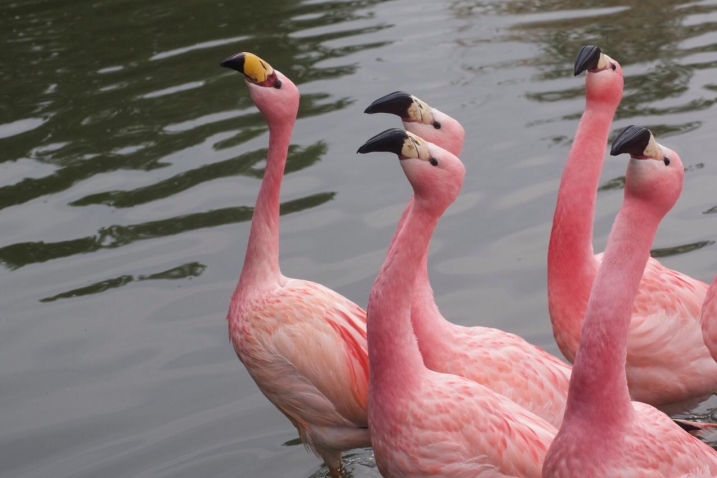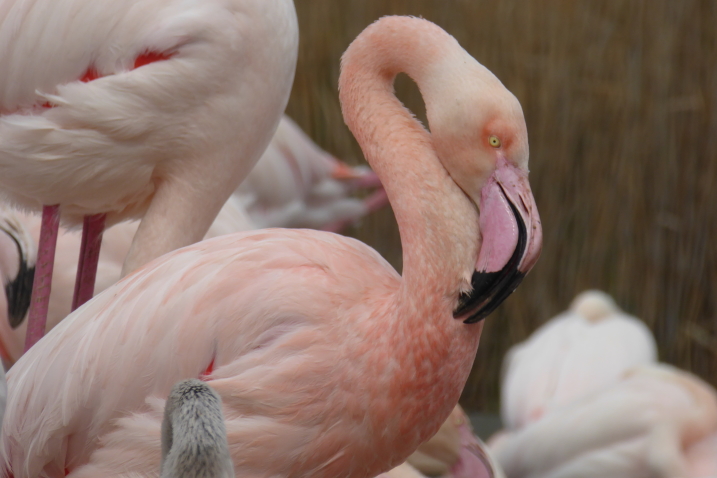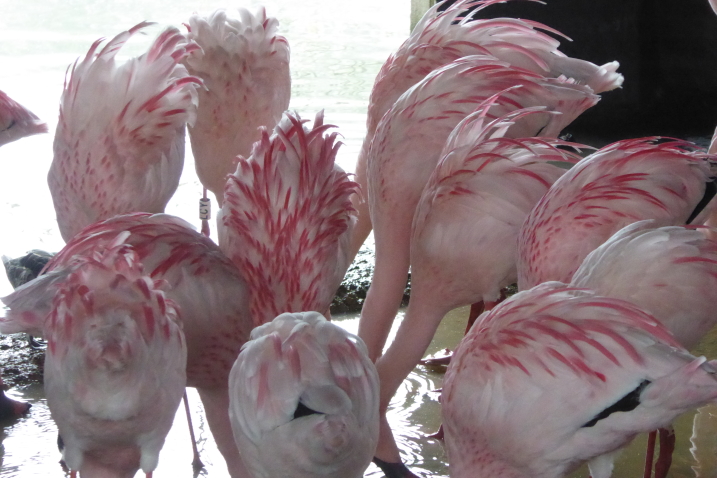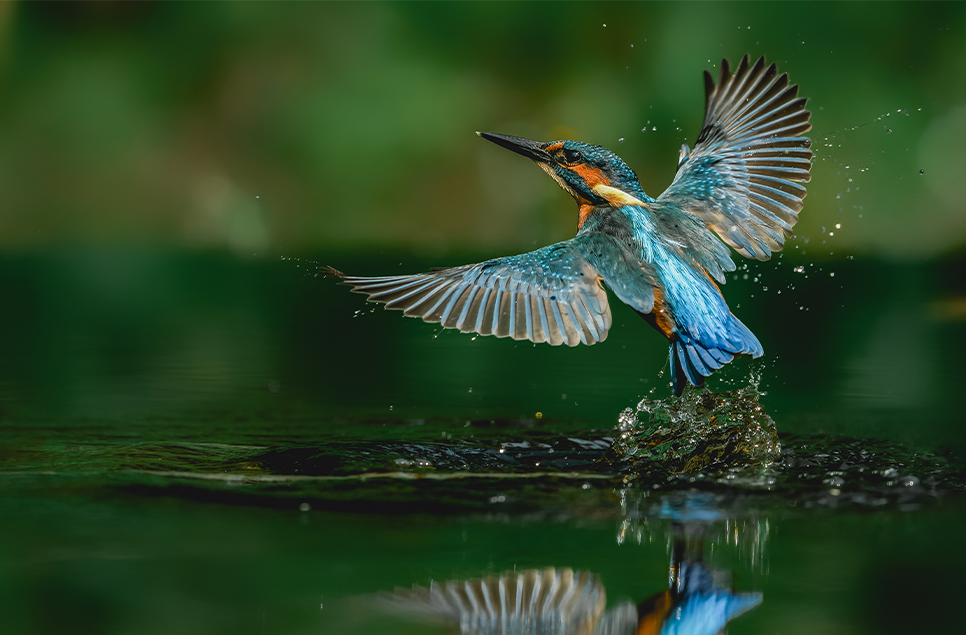Flamenco flamingo - What's in a name?
Flamingos are well-known for their colour and dancing skills, their habits of standing on one leg. But why are they called flamingos?
Flamingos are synonymous with colour and a colourful way of life. From the bright pink pigments in their feathers, to the splashes of colour on the bills and their startling array of dance moves, these are bird that can stand out from the crowd. So where does the name of the flamingo come from, and how does it relate to what they look like?

Let's dance! Mr James' leads the charge in a marching group of the Andean flamingos. There are striking colours on all different parts of the flamingo's body if you look close enough. And the family resemblance between species is obvious to see too. (PHOTO: J. Beilby)
There are a range of explanations for the name of these birds, as well as for some of their individual species names too (more on these individual species in a future post). The word flamingo itself is thought to have originated in the 1560s from either the Portuguese or Spanish word "flamengo", which means flame. In the modern day versions of these languages this is flamenco, which sounds like the flamboyant dancing of the Iberian region. Something that again links back to the birds themselves. Whilst the precise reason for the naming of flamenco dancing is lost to the mists of time there is a theory that flamenco, meaning flame, relates to fiery, passionate behaviour - which is the overall theme of this dancing.
You can see some fiery, flamenco-style action in the clip above. The Caribbean flamingo flock gets very excited during its courtship display and charges around making a lot of noise and wing flapping. Flamingo flamenco?!
The oldest record of flamenco dates to the 1770s, so the description of the birds definitely comes before the dancing! But it's a nice story to think that there may be some similarities.
Other origins of the word flamingo
There are other origins to flamingo too, and these have a similar theme to the Spanish / Portuguese ancestry explained above. In the Provençal dialect of southern France, these birds are called flamenc, which derives from "flamma" (meaning flame). The species of flamingo that those first describing the flamingo would have been familiar with would be the greater flamingo. And whilst this is an overall pale bird, during courtship when it spreads its wings wide, the bright pink and red colours are visible- thus resembling a flame. Those early European explorers of Latin America would have been more familiar with the crimson Caribbean flamingo- a species that really does lend itself to the description of "flame coloured".
Flamingo names in the ancient world
If we turn to the Greek language we get some more clues to the naming our favourite pink birds. The scientific naming of flamingos also describes what they look like. Their scientific order (i.e. the group of birds that they belong to) is called Phoenicopteriformes. In Greek, the word for flamingo is "phoinikopteros" or in the Greek alphabet φοινικόπτερος, and you can see the link to the scientific naming of the birds. The names mean "red-feathered" and is another great description of these birds. The six species of flamingos all belong to Phoenicopterformes and no other living birds do. So flamingos are amongst the few types of animals to not have other species share their family grouping. The family resemblance between each species of flamingo is very clear to see however.

A preening greater flamingo. This bird has enhanced the colour of its pink plumage by adding more and more preen oil, which stains its white feathers brighter. Phoenicopterus roseus, the greater flamingo would have been familiar to those ancient Greeks and Roman, Mediterranean and Iberian cultures.
Our final stop on the flamingo naming tour is with Ancient Egypt. From this culture too, we get an idea of the striking impact that the flamingo's appearance has on those describing it. The Ancient Egyptians believed flamingos were an incarnation of the sun god Ra, one of this society's most important gods. It is from the Egyptians that the legend of the phoenix arises. The mythical firebird that bursts into flames only to be re-born out of the pile of ashes and soot. The huge flocks of flamingos that would have been visible to those early African civilisations, appearing out of the heat haze may have looked like the phoenix. Flamingos rising from the ashes with their bright crimson and pink feathers.

Most likely the species of flamingo that inspired ideas of the phoenix from the Ancient Egyptians... Flames on their feathers, or looking like crimson flowers? The very colourful lesser flamingo flock at WWT Slimbridge.


